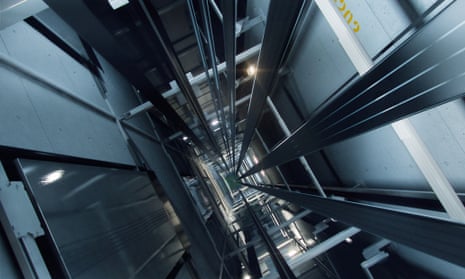We Maintain Lifts with Precision: Ensuring Safety and Effectiveness
We Maintain Lifts with Precision: Ensuring Safety and Effectiveness
Blog Article
Digging Into the World of Elevators: Usual Issues Encountered by Various Lift Systems
As we navigate through the upright transportation systems of modern buildings, lifts stand out as an essential part of our everyday lives. From hydraulic elevators to grip systems and machine-room-less layouts, each lift type comes with its collection of usual issues.
Hydraulic Elevators
Hydraulic lifts, frequently preferred for low-rise buildings, utilize fluid stress to manage the motion of the lift car (lift repair companies). This system involves a hydraulic pump pressing oil right into a cylinder, triggering the lift to relocate in the preferred direction. While hydraulic elevators are understood for their silent and smooth procedure, they do include their very own collection of common problems
One widespread trouble with hydraulic lifts is oil leakage. In addition, problems with the control system, such as faulty valves or a malfunctioning pump, can create disruptions in the elevator's motion.
Normal upkeep and punctual repair services are important to guarantee the smooth performance of hydraulic lifts. By attending to these common concerns proactively, structure owners can decrease downtime and guarantee the safety and effectiveness of their vertical transport system.
Grip Lifts
When considering vertical transportation systems in buildings, another common kind apart from hydraulic lifts is the traction lift. Traction lifts run making use of a system of ropes and counterweights that move the lift automobile by gripping onto the hoist ropes. This device permits for smoother and quicker upright transportation compared to hydraulic systems.
Among the typical issues encountered by grip elevators is rope wear. The consistent movement of the ropes within the grip system can cause deterioration in time, potentially triggering the elevator to malfunction or become unsafe for usage. Regular assessments and maintenance of the ropes are necessary to make certain the lift's correct functioning and security.
Another issue that grip elevators may encounter is connected to the control system. Issues with the control system can result in problems such as irregular movement, hold-ups in reaction times, or perhaps full shutdowns. Normal testing and maintenance of the control system are crucial to stop such issues and make certain the elevator's dependability.
Machine-Room-Less (MRL) Elevators

One of the key parts of MRL lifts is the portable gearless grip equipment that is installed within the hoistway. This maker effectively drives the lift vehicle without the need for cumbersome equipment found in typical grip click here for info lifts. Furthermore, MRL lifts typically make use of a weight system to balance the car, further enhancing their power efficiency.
Regardless of their benefits, MRL lifts may encounter challenges associated with repair and maintenance because of the restricted space for equipment installation. Availability for servicing components within the shaft can be restricted, calling for specialized training for specialists. Correct upkeep routines and routine examinations are important to ensure the ongoing smooth procedure of MRL elevators.
Overloading and Weight Limitation Issues
Overloading and weight restriction problems are vital worries in elevator procedures. Lift producers a fantastic read design raises with particular weight abilities to guarantee guest safety and security and devices long life.
When elevators are overloaded, it places too much strain on the electric motor, wires, and various other elements, possibly triggering malfunctions or malfunctions. If they find excess weight, security devices such as sensors and overload sensors are in location to prevent lifts from moving. In addition, exceeding weight limits can result in increased energy intake and deterioration on the elevator system.
To minimize straining problems, developing managers must plainly show weight limits in elevators and inform owners on the importance of adhering to these constraints - lift repair companies. Routine maintenance checks by qualified service technicians can also assist make sure that elevators are operating within risk-free weight parameters. By dealing with overloading and weight limit issues proactively, structure proprietors can improve elevator safety and performance
Electric System Failings
Exceeding weight restrictions in lifts can not only lead to mechanical concerns yet likewise potentially add to electrical system failures within the read what he said lift facilities. Electric system failures are a critical worry in elevator operation, as they can create unanticipated shutdowns, malfunctions, or even security dangers.
Moreover, power surges or variations in the electrical supply can also disrupt the lift's procedure, impacting its efficiency and safety and security. These electric disruptions can damage sensitive lift elements such as control panels, circuit boards, or sensors, leading to system failures. Normal maintenance and assessments are essential to identify and resolve prospective electric problems quickly, ensuring the reliable and safe operation of lift systems. By adhering to weight limitations and carrying out regular electric system checks, structure proprietors can minimize the risk of electric failures in elevators.
Final Thought

Hydraulic lifts, often preferred for low-rise buildings, utilize fluid pressure to control the movement of the elevator cars and truck.When considering upright transportation systems in structures, an additional usual kind aside from hydraulic elevators is the traction lift. Traction lifts operate utilizing a system of ropes and weights that move the elevator car by grasping onto the hoist ropes. Unlike standard elevators that require a different machine room to house the equipment, MRL elevators incorporate most of the components within the shaft, eliminating the demand for a specialized machine room.In final thought, lifts deal with common concerns such as hydraulic breakdowns, grip system failings, and electric system problems.
Report this page